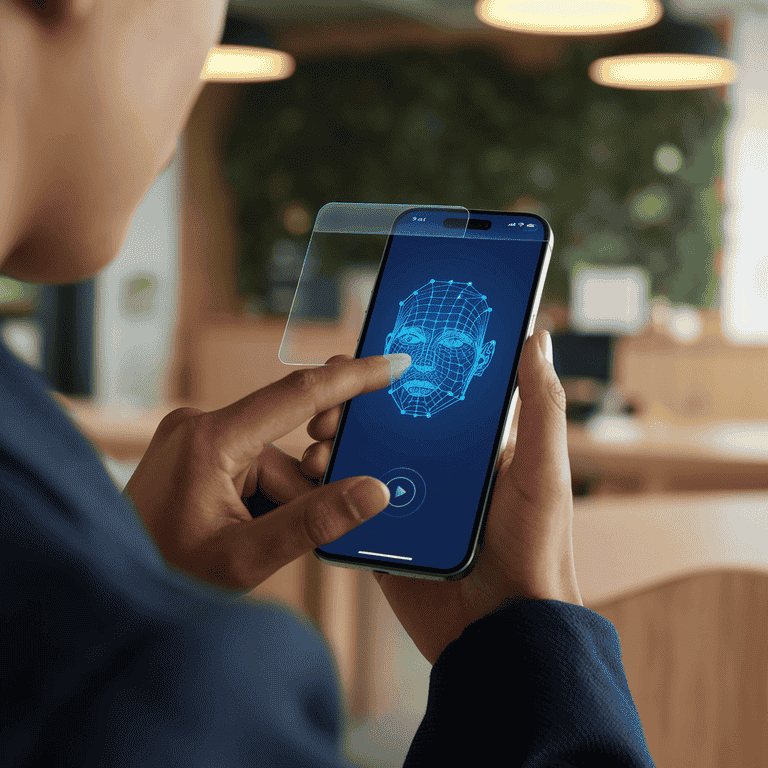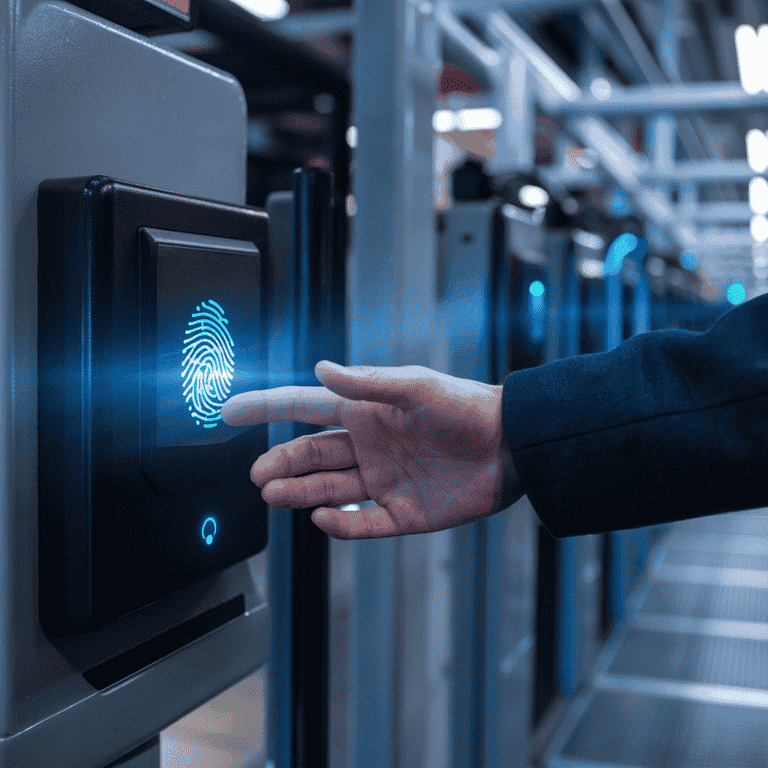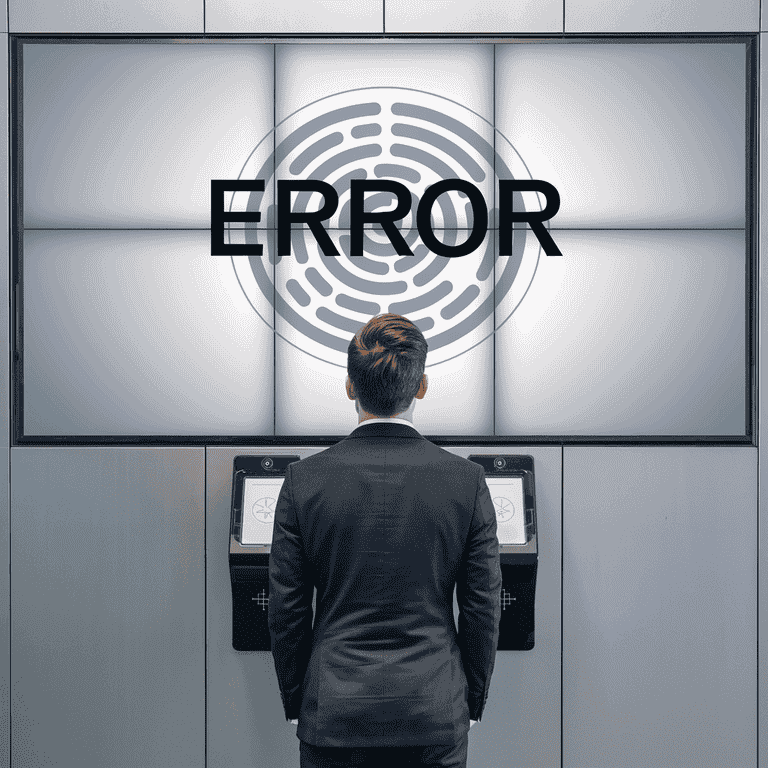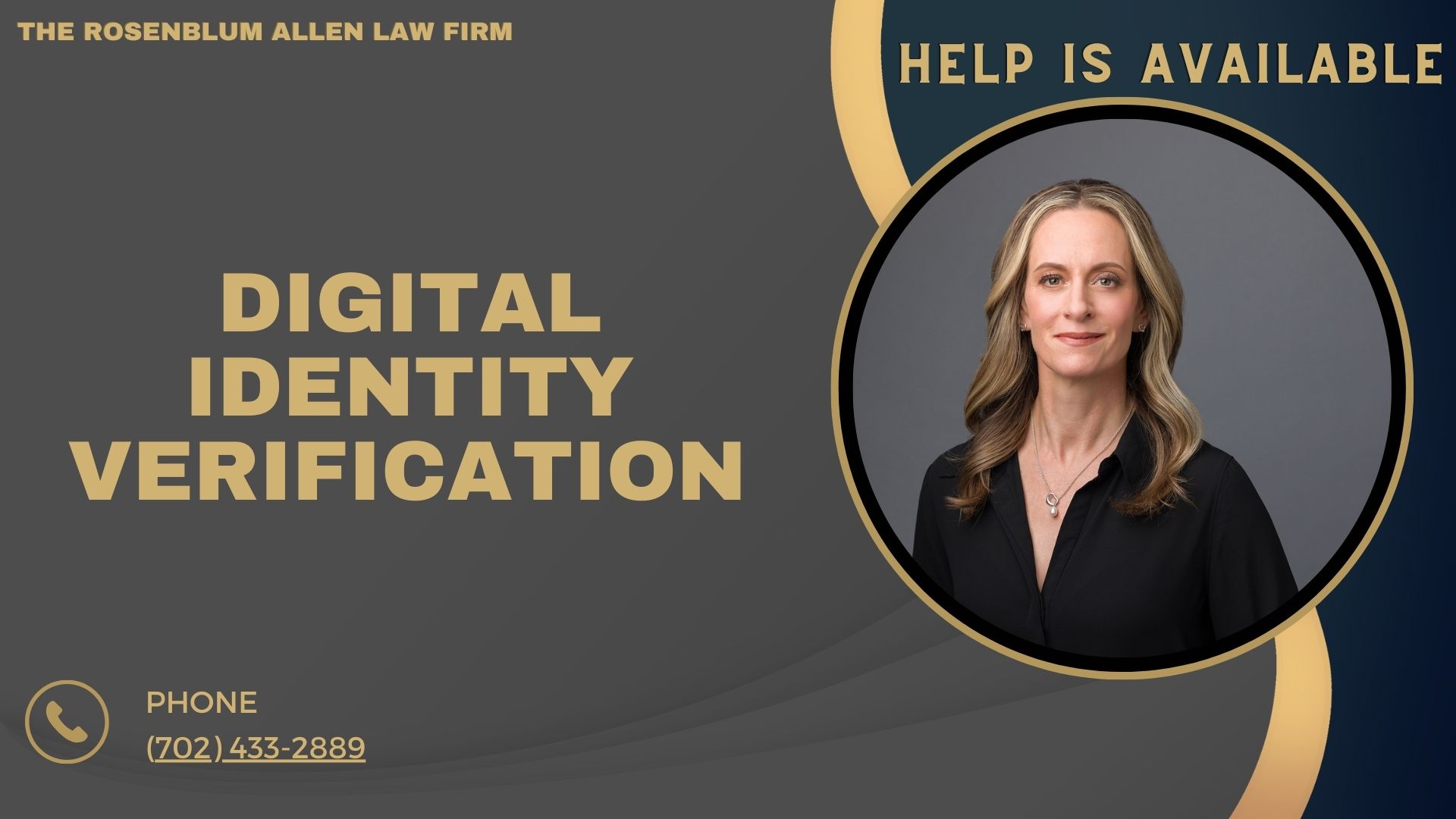Biometric verification is a modern method of confirming someone’s identity using unique physical or behavioral traits. Instead of relying on passwords or PINs, it uses characteristics like fingerprints, facial features, or voice patterns.
This technology is everywhere. It secures your phone, allows quick bank logins, and speeds border crossings. As technology evolves, biometric verification is critical to ensuring security and convenience.

 How Biometric Verification Works
How Biometric Verification Works
The Process of Capturing and Analyzing Biometric Data
Biometric verification starts with collecting data. A sensor scans or records a physical or behavioral trait. This could be:
- A fingerprint on your phone’s home button.
- A camera scans your face.
- Your voice was recorded for a call center.
Once captured, this data is turned into a digital template. The system then compares this template with stored records to confirm your identity.
Common Technologies Used
Fingerprints
- Captures ridges and patterns on fingertips.
- Popular in smartphones and security systems.
Facial Features
- Analyzes shapes, distances, and contours of the face.
- Used in phone unlocking and airport security.
Voice Patterns
- Measures unique vocal traits like pitch and tone.
- Often used in customer service authentication.

Applications of Biometric Verification
Everyday Uses
Smartphone Unlocking
Your fingerprint or face makes logging into your phone seamless.
Online Banking Authentication
Banks use biometrics to verify users for faster, safer access to accounts.
Commercial and Industrial Applications
Secure Facility Access
Businesses rely on biometrics for restricted areas. A scan ensures that only authorized personnel get in.
Financial Transaction Verification
Payments can be verified with just a fingerprint or face scan—no need for cards or passwords.

Benefits of Biometric Verification
Enhanced Security Compared to Traditional Methods
Biometric verification adds a layer of security that is hard to fake. Unlike passwords or PINs, biometrics rely on something unique to you—your physical or behavioral traits.
Here’s why this matters:
- Passwords can be guessed or stolen. Biometrics are much harder to replicate.
- Cards can be lost. You can’t misplace your fingerprint or voice.
- Faster fraud detection. Real-time biometric verification can flag attempts to cheat the system.
This makes biometrics a trusted choice for safeguarding sensitive information and access.
Streamlined User Experience
Biometric verification is fast and easy to use—no need to memorize complicated passwords or carry extra gadgets.
Consider these scenarios:
- You tap your fingerprint, and your phone unlocks instantly.
- A quick face scan lets you pay for groceries without your wallet.
- Your voice alone confirms your identity to a customer service agent.
This seamless interaction saves time and reduces frustration.

Challenges in Biometric Verification
Privacy Concerns
Biometric systems store personal data. This raises questions about how that data is used and protected.
Key concerns include:
- Data misuse: Who has access to your biometric information?
- Hacking risks: If someone steals biometric data, you can’t change your fingerprint.
- Consent: Are users fully aware of how their data will be handled?
Governments and companies are working to address these issues. Stricter regulations and transparency in data handling are helping ease these worries.
Technical Issues
Biometric systems aren’t perfect. Sometimes, they fail to work as expected.
Common problems include:
- Accuracy issues: False positives (granting access to the wrong person) or false negatives (denying access to the right person).
- Environmental factors: Dirt, poor lighting, or background noise can interfere with scanning.
- System errors: Outdated or poorly maintained technology might not work reliably.
Balancing Security and Cost
Implementing biometric systems can be expensive. Businesses need to weigh the benefits against the investment in hardware, software, and maintenance.

Breaking It All Down
Biometric verification is reshaping how we think about security and identity. It offers a unique blend of convenience and protection, making everyday tasks smoother and safer.
Biometrics are a part of our daily lives, from unlocking phones to verifying bank transactions. However, like any technology, they come with challenges. Addressing privacy concerns and improving accuracy will ensure they remain reliable and trusted.
As this field grows, we can expect even more innovative and secure solutions. Biometric verification is here to stay, helping us move into a future where security is effortless and effective.

Frequently Asked Questions
What is the difference between physical and behavioral biometrics?
Physical biometrics rely on unique physical traits like fingerprints, facial features, or iris patterns. Behavioral biometrics analyze actions, such as typing speed, handwriting style, or voice cadence. Both methods help verify identity, but behavioral biometrics focus on patterns of behavior rather than static traits.
Can biometric verification be used alongside other security methods?
Yes, many systems use biometrics as part of multi-factor authentication. For example, you might need both a fingerprint scan and a password to access an account. Combining methods enhances security by requiring more than one form of verification.
How is biometric data stored and protected?
Biometric data is typically stored as encrypted templates rather than raw images or recordings. These templates are matched during verification but cannot easily be reverse-engineered into original data. Secure servers and strict data access controls are used to protect this sensitive information.
What happens if biometric verification fails?
If a system cannot verify a user, alternative methods are often available. For example, a PIN or security question might serve as a backup. Failures can occur due to issues like dirty sensors, poor lighting, or temporary physical changes, such as an injury to a finger.
Is biometric verification safe for children?
Biometric verification can be safe for children, but its use depends on context. For instance, some schools use biometrics for attendance or meal programs. However, parents should ensure that data is handled responsibly and deleted when no longer needed.
Can biometric systems be fooled?
While advanced biometric systems are hard to trick, no system is entirely foolproof. For example, older facial recognition software could sometimes be fooled by photos. Modern systems now use liveness detection to confirm the presence of a real person.
What industries are adopting biometric verification the fastest?
Biometric verification is widely used in banking, healthcare, travel, and law enforcement. Banks use it to prevent fraud, hospitals for secure patient access, airports for seamless check-ins, and police for suspect identification.
Are there accessibility concerns with biometric verification?
Yes, some biometric systems may not work effectively for individuals with disabilities. For example, facial recognition may struggle with certain facial differences, or fingerprint readers may not work for people with worn fingerprints. Developers are working to make biometrics more inclusive.
How is biometric verification evolving with new technologies?
Emerging trends include multimodal biometrics, which combine two or more types (like face and voice), and AI-powered systems for improved accuracy. These advancements aim to make biometric verification faster, safer, and more reliable.
Can biometric verification be used remotely?
Yes, many systems allow remote biometric verification. For instance, facial recognition can be used via webcams or mobile devices for secure logins. This is increasingly popular for online banking, remote work, and virtual events.

Additional Resources for You from The Rosenblum Allen Law Firm.
Here are the additional resources created by our lead attorney, Molly Rosenblum Allen, Esq., each with a brief description to guide you:
Criminal Defense Attorneys
If you’re facing criminal charges, our criminal defense attorneys provide effective representation. They offer a thorough defense to protect your rights and help you navigate the legal system.Las Vegas DUI Lawyer
A DUI charge can have serious consequences. Our Las Vegas DUI lawyers specialize in defending clients charged with driving under the influence, ensuring you receive the best possible outcome.Domestic Violence Lawyer Las Vegas
If you’re involved in a domestic violence case, we offer experienced legal representation to protect your rights, whether you’re the alleged victim or the accused.Drug Possession Lawyer
Facing drug possession charges? Our skilled drug possession lawyers can help build a strong defense, potentially reducing or eliminating penalties.Sex Crimes Attorney
Charges related to sex crimes are serious and require a lawyer with experience in defending such cases. Our attorneys are here to ensure your rights are protected throughout the process.CPS Defense Attorney
If you are facing accusations of child abuse or neglect, our CPS defense attorneys are committed to defending your parental rights and protecting your family’s future.Misdemeanor Lawyer
Misdemeanor charges may seem minor, but they can still lead to significant consequences. Our misdemeanor lawyers work to minimize penalties and defend your reputation.Las Vegas Warrant Defense Attorney
If you have a warrant out for your arrest, our Las Vegas warrant defense attorneys can assist in handling the matter efficiently and work toward clearing your name.Las Vegas Probation Violation Attorney
Violating probation can lead to severe consequences. Our probation violation attorneys will help you understand your options and defend your case to avoid harsher penalties.Theft Crime Defense Lawyer
Whether it’s shoplifting, burglary, or grand theft, our theft crime defense lawyers specialize in providing strong defense strategies to protect you from theft-related charges.Kidnapping Lawyers
Kidnapping charges carry serious penalties. Our kidnapping lawyers are experienced in handling such sensitive and complex cases, working hard to ensure the best defense.Juvenile Defense Lawyers
If your child is facing criminal charges, our juvenile defense lawyers focus on protecting their future by guiding them through the juvenile justice system with care and expertise.Firearms Lawyer Las Vegas
Whether you’re dealing with illegal possession, trafficking, or misuse of a firearm, our firearms lawyers in Las Vegas provide skilled defense to protect your rights.
Each of these services has been created to help guide and defend you during some of the most challenging times. Feel free to explore these links to learn more about the effective legal assistance available to you.

Offsite Resources for You
American Translators Association – www.atanet.org
A comprehensive resource for professional translators, offering certification, tools, and resources for anyone interested in translation services.
ProZ.com – www.proz.com
A platform where professional translators and clients connect, offering forums, job postings, and resources for legal translation professionals.
Globalization and Localization Association – www.gala-global.org
GALA supports professionals in translation and localization, with resources and networking opportunities for those involved in legal translation work.
The Institute of Translation and Interpreting – www.iti.org.uk
A professional body for translators and interpreters, offering accreditation, education, and resources for legal translators.
National Association of Judiciary Interpreters and Translators – www.najit.org
A valuable resource for translators and interpreters specializing in legal proceedings, with tools and information on court-related translation needs.
AI for Good Foundation – www.aiforgood.org
A nonprofit that promotes the use of artificial intelligence to benefit society, including applications in translation and legal technologies.
Global Translations – www.globaltranslations.com
Specializing in translation and localization services, Global Translations offers expertise in legal translation and other industries, providing access to a range of language services.

A Special Message from Our Lead Attorney, Molly Rosenblum Allen, Esq

Thank you for taking the time to explore these resources. I hope you found the information helpful as you navigate your legal options. Please don’t hesitate to reach out if you’re ready to take the next step or have questions about your situation. My team and I are here to help you every step of the way. Call us at (702) 433-2889, and let’s get the ball rolling on your case.
Warm regards,
Molly Rosenblum Allen, Esq.




